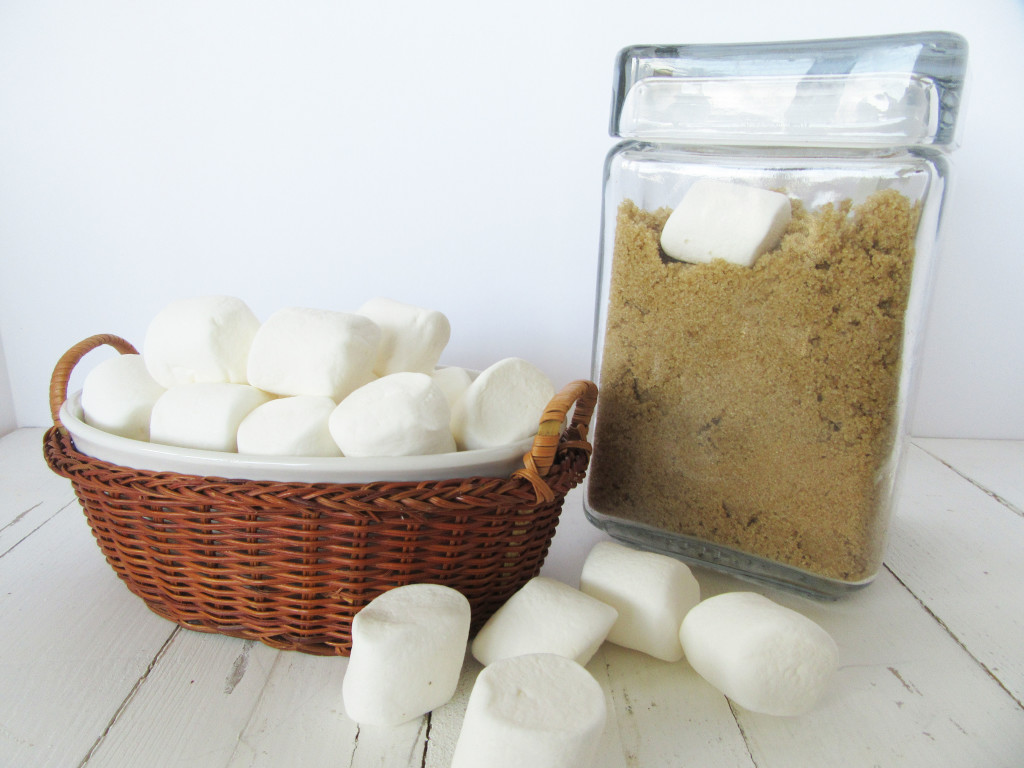If you’re like me you’ve probably had this experience.
You are in the middle of stirring up some type of sweet treat. You reach in the cupboard for your brown sugar. And that sugar has been transformed into the Rock of Gibraltar!
Have you ever wondered why this happens? I did some research to find out.
According to thekitchn.com each crystal of the brown sugar is coated with a thin layer of molasses and that keeps the sugar moist. But if the brown sugar is exposed to the air, the molasses evaporates and the sugar particles become glued to each other, resulting in one solid mass of sugar. Not very appetizing or user-friendly!
Well, that never has to happen to any of us again. Here are a couple of ways to bring that brown sugar back to a usable state if it’s already hard / prevent it from hardening in the first place.

Option 1: Simply throw several large marshmallows into your brown sugar container and seal tightly. Those marshmallows will absorb any moisture or humidity that would harden the sugar so your brown sugar will be ready and waiting for your next baking project. This only works if your brown sugar isn’t already rock solid.
Option 2: This ingenious little gadget. It keeps your brown sugar moist OR if you’ve already missed the boat and that sugar is hard as a brick, it works its magic to soften it up.
It’s called a BROWN SUGAR SAVER and comes in a variety of shapes, sizes, and designs. Simply soak it in water for fifteen minutes and dry completely. Then place it in the bag of rock hard brown sugar. By morning, that sugar should be just like it was when you bought it. It’s amazing! And these little disks make great stocking stuffers or hostess gifts for ALL the cooks on your list!
So next time…don’t throw away that hockey puck…revive it! And get back to baking!


For years I do what my Mom did. I put a slice of fresh bread in the container and it has always worked for me. I do the same thing if I want to soften cookies. My husband likes softer cookies and I like crisper ones. So I just make a container of each that way. The bread gets dried out but the moisture goes in the product. No water necessary.